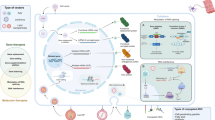Abstract
The L-type Ca2+ channel in skeletal muscle (α1S) is essential for excitation–contraction (EC) coupling. Previous studies using chimeras composed of α1S together with α1C or α1M demonstrated the importance of the α1S II–III loop and of a smaller subdomain (residues 720–764; ‘ECC’) in skeletal EC coupling. However, these chimeras failed to test the significance of regions outside the II–III loop, which are highly conserved between α1S and α1C. Therefore, we have injected dysgenic (α1S-lacking) myotubes with cDNAs encoding chimeras between α1S and the highly divergent T-type Ca2+ channel, α1H. The chimeras consisted of GFP-tagged α1H with one or more of the following substitutions: α1S II–III loop residues 720–764 (‘ECC’), a putative targeting domain of the α1S C terminus (‘target’; residues 1543–1662) or the entire α1S C terminus (‘Cterm’; residues 1382–1873). The presence of either target or Cterm affected the expression and/or kinetics of whole-cell currents recorded from both dysgenic muscle cells and tsa-201 cells. Importantly, substitution of ECC alone into GFP-α1H (GFP-α1H + ECC), or together with either target (GFP-α1H + ECC + target) or Cterm (GFP-α1H + ECC + Cterm ), was insufficient to restore electrically evoked contractions. Depolarization-induced fluorescence transients for GFP-α1H + ECC, GFP-α1H + ECC + target or GFP-α1H + ECC + Cterm had a bell shaped dependence upon membrane voltage (inconsistent with skeletal EC coupling) and were also exceedingly small (unlike cardiac EC coupling). The absence of EC coupling for these chimeras raises the possibility that regions of α1S outside of ECC and target are necessary for providing the context that allows these two domains to function in EC coupling and targeting, respectively. Additionally, an inadequate membrane density of the chimeras may have contributed to the lack of coupling.
Similar content being viewed by others
Author information
Authors and Affiliations
Rights and permissions
About this article
Cite this article
Wilkens, C.M., Beam, K.G. Insertion of α1S II–III loop and C terminal sequences into α1H fails to restore excitation–contraction coupling in dysgenic myotubes. J Muscle Res Cell Motil 24, 99–109 (2003). https://doi.org/10.1023/A:1024830132118
Issue Date:
DOI: https://doi.org/10.1023/A:1024830132118




